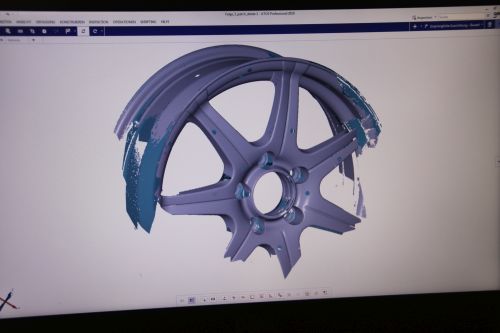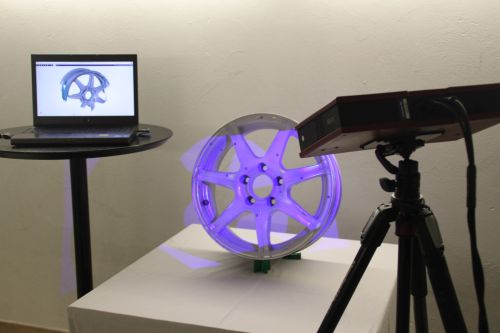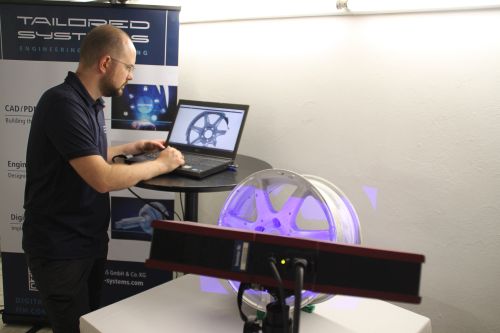3D Metrology
As a new business area, the topic “Metrology” is brought further into focus. Specifically “3D Metrology”. This is best described as digitally recorded specific geometries by means of a laser scanner.
The progressive use of 3D geometry in research and development, as well as in private areas, requires the delivery of geometry in a three-dimensional description. If no 3D model is available for this geometry, either because it has been lost or because there was no equipment for it at the time of creation, the subsequent acquisition of the data by means of 3D laser scan must be employed.
Below are some applications described in more detail.
Reverse Engineering

In this case the finished part is subjected to a 3D laser scanning from which a 3D model is created after several process steps backwards. It should be noted that this resulting 3D model is only an approximation. The 3D scan generates point clouds. After automatic or partly manual processing, surfaces arise which are defined as good approximations to superimpose these point clouds.
We should also mention that the point clouds are also subject to variations. In most cases, these approximations are sufficient.
Digital Capturing of Environmental Geometry
 Creating products that are to be inserted into an existing environment may require the presence of this environment in digital form.
Creating products that are to be inserted into an existing environment may require the presence of this environment in digital form.
Since a manual measurement may not be possible due to cost or other obstacle reducing feasibility, all that remains is the digital recording of the environment by a 3D laser scanning.
Depending on the situation, the quality of precision in such a case can possibly be reduced. Such detection may be implemented in a short time depending on the spatial extent.
TAILORED SYSTEMS created this 3D data acquisition system and is preparing three-dimensional geometry as per request.



 Capturing individual measuring points by means of so-called Tactile Scanning is a lengthy and often incomplete process due to the approach. The surface of the component is usually the determining factor in the selection of the probe diameter, as with cast pieces, for example.
Capturing individual measuring points by means of so-called Tactile Scanning is a lengthy and often incomplete process due to the approach. The surface of the component is usually the determining factor in the selection of the probe diameter, as with cast pieces, for example.